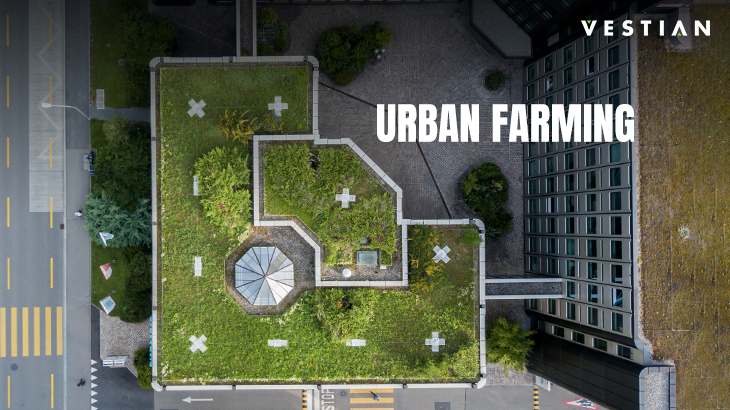Urban farming, a fast-growing trend that can provide a possible solution to future food security and promote a greener lifestyle. The concept is also referred to as urban agriculture and encompasses growing food for urban dwellers within city limits. This includes vertical, terrace and balcony farming as well as optimal use of land by residential and commercial buildings in the cities. Technological innovations like hydroponic, aeroponic, aquaponic and LED lighting system create a controlled environment and can potentially boost food production, alongside reducing the negative ecological impacts of agriculture. Existing land parcels -stand-alone or part of campuses, even old or abandoned buildings, warehouses, etc can be used for urban farming.
Take for example Lufa Farms, Canada. It opened its first greenhouse in the Ahuntsic district of Montreal on top of an existing two-story office building. 31,000 sq. ft. the structure grows fruits, vegetables, and herbs hydroponically, capturing rainwater and completely recycling its irrigation water. The company’s second greenhouse was opened on the roof of a new mixed-use commercial building in the Laval suburb of the city. In New York City, Brooklyn Navy Yard Farm an old industrial buildings’ two-third rooftop is covered with soil and the vegetated roof reduces stormwater runoff. The Navy Yard farm also has egg-laying hens and a commercial apiary for beekeeping. Queen Elizabeth Hall Roof Garden, Southbank Centre London, England is a great example of an old, empty commercial space being repurposed for urban farming. The sundeck on the hall’s roof was transformed into a roof garden and boasts of a café that is open to the public. In Bangalore, India an IT tech park has made provisions for employees working on the campus to spend some time growing crops. The produce is later sold at the weekly market to generate income. In Honk Kong, Cathay Pacific headquarters boasts of a rooftop farm, where employees can spend time growing produce or communing with nature.
Apart from flexibility, urban farming is more productive compared to regular farming and utilizes fewer resources through the use of technology. Additionally, it shortens the supply chain and allows fresh food to reach your tables in a shorter span. It lowers the carbon footprint of the building by making it greener and more sustainable and increases the yield of the building. The building can command higher rental, while positively impacting the lives of its occupants in terms of both fresh organic food items as well as having fresh clean air around them. On the downside, this method is still in its nascent stage and cost-intensive in its initial stages, but given the advantages, it is definitely worth the cost.
